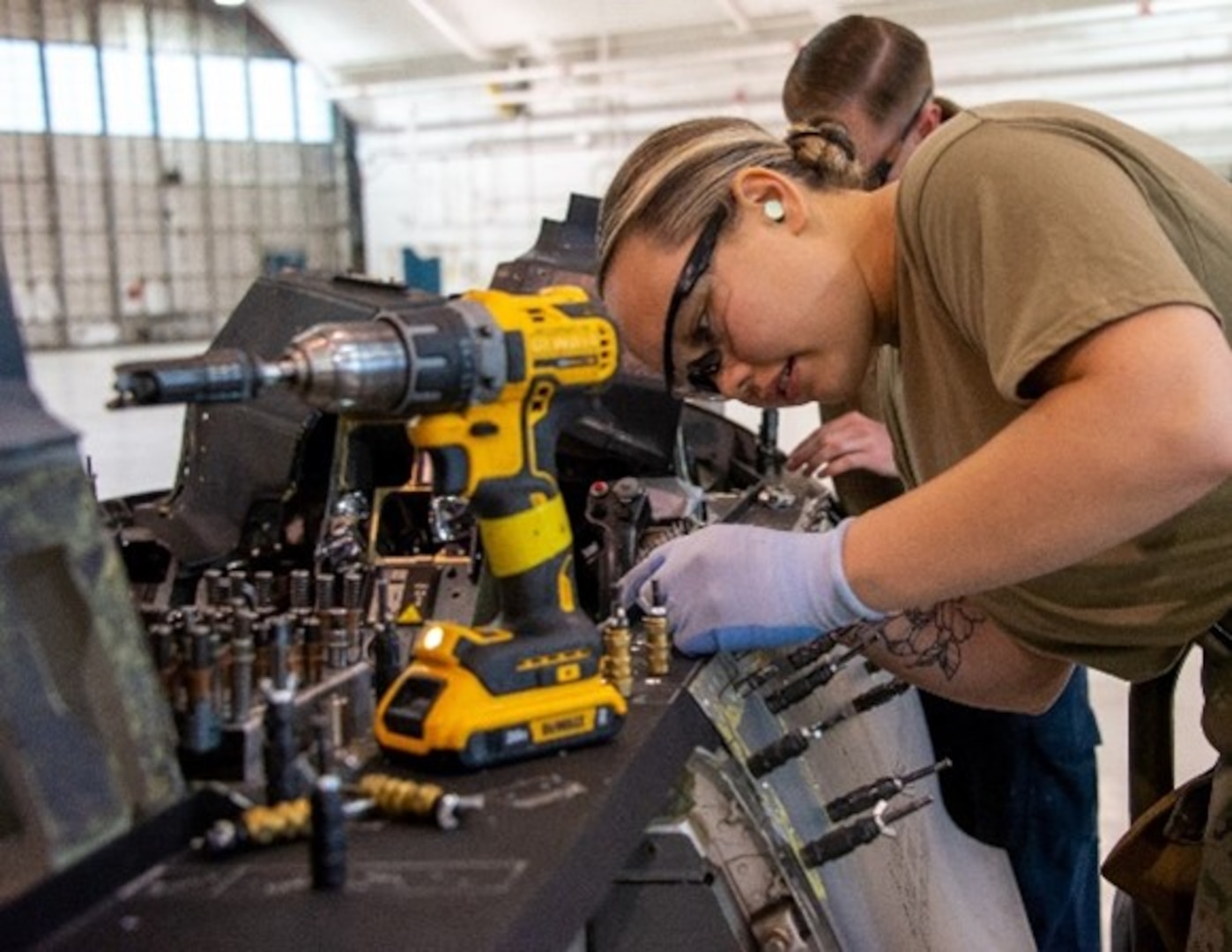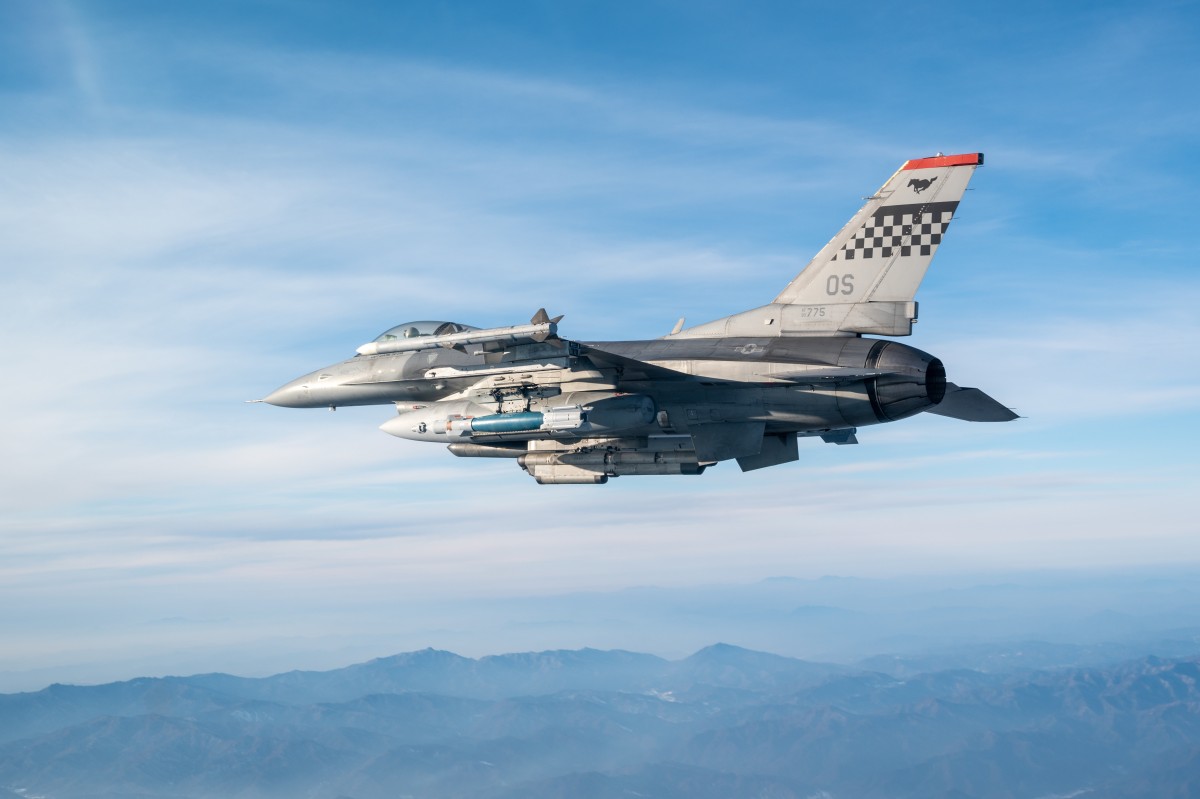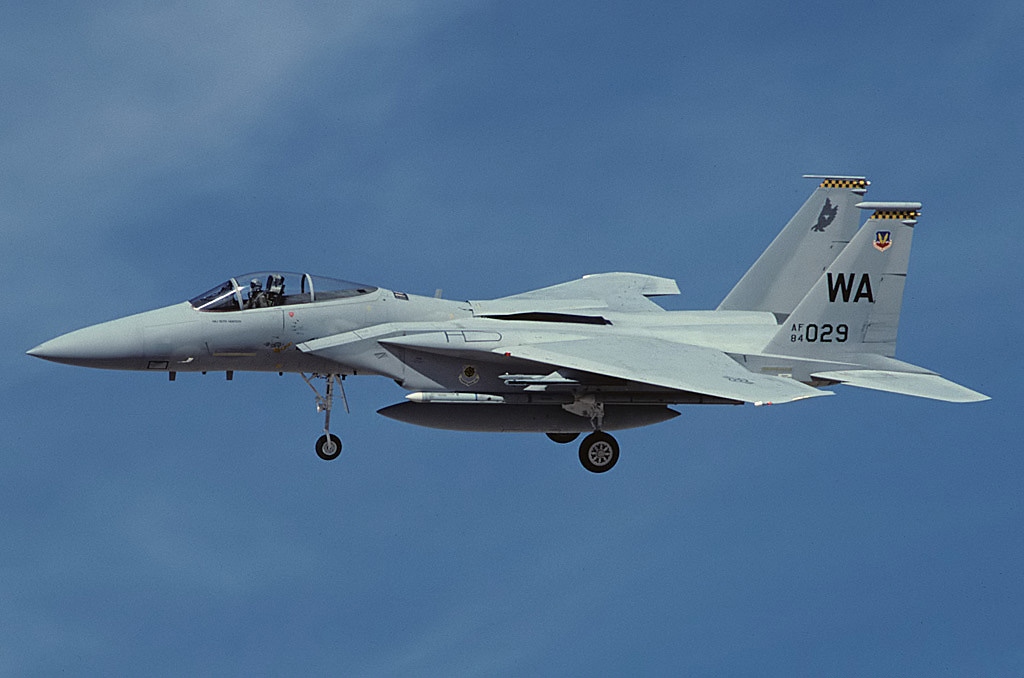In a recent press release issued by the 140th Wing Public Affairs, a key concern regarding cracks in the canopy sill longerons (CSL) of the US Air Force’s F-16 Fighting Falcon fleet was highlighted.
Over the past year, cracks in the CSLs of 90 F-16s across the entire US Air Force inventory have been discovered. This has led to the grounding of affected aircraft and prompted a proactive response from maintenance personnel.
The CSLs, crucial structural components running the full length of the cockpit, provide vital support between the aircraft’s frame and skin, preventing tension and bending of the fuselage.
Cracks in these components have raised concerns about potential aircraft grounding and the need for depot-level repairs, which could significantly impact operational readiness.
US Air Force Tech. Sgt. Taylar M. Reilly said, “The aircraft is immediately grounded when the canopies crack. A crack can spread, and if both sides break, the whole nose could fall off,” underlining the risk of structural failure if the cracks spread and affect both sides.

The high-performance capabilities of the F-16, including supersonic speeds and high-G maneuvers, place considerable strain on aging airframes.
While structural concerns are not uncommon, traditional maintenance procedures are typically conducted at depot facilities. However, recent events have prompted a shift towards localized maintenance solutions.
The Colorado Air National Guard’s 140th Maintenance Group (MXG) at Buckley Air Force Base faced a unique challenge when two of their F-16s were grounded simultaneously due to cracked CSLs.
Traditionally, such repairs would necessitate extensive disassembly and transport to designated Air Force Materiel Command (AFMC) depot facilities, resulting in prolonged aircraft downtime.
However, in this case, maintainers from the 140th MXG, led by U.S. Air Force Staff Sgt. Danielle M. Morgan and Tech. Sgt. Taylar M. Reilly has introduced new maintenance practices to address the issue, the press release added.
These innovative practices have enabled the team to conduct repairs on two aircraft experiencing CSL issues concurrently, effectively reducing downtime and eliminating the need for extensive disassembly and transport to depot facilities.
Meanwhile, Reilly highlighted the challenges faced by depot facilities, citing overwhelming workloads that have led to delays in completing repairs on time. He also noted the specialized expertise possessed by National Guard members, which has proven invaluable in addressing aircraft-specific maintenance requirements.

Similar Concerns Found In F-15s In The Past
Meanwhile, Alert 5 has reported that similar concerns have previously surfaced regarding the F-15 Eagle aircraft. In 2007, a routine training mission turned into a harrowing ordeal when an F-15C Eagle fighter jet, operated by the 131st Fighter Wing of the Missouri Air National Guard, experienced an in-flight break-up due to a defective longeron supplied by Boeing.
The incident, which occurred near St. Louis, Missouri, resulted in the grounding of a large number of F-15s across the US Air Force fleet. On November 2, 2007, Major Stephen Stilwell piloted the F-15C Eagle on a standard training sortie.
Approximately 20 minutes after takeoff, the aircraft encountered a violent shudder in its forward fuselage, ultimately leading to its breakup at an altitude of 18,000 feet.
Despite sustaining injuries, including a dislocated left shoulder and a fractured left arm, Major Stilwell successfully ejected from the aircraft just before it disintegrated, scattering debris across the Missouri countryside.
A subsequent investigation into the accident revealed that the root cause was a defective longeron within the F-15C. The longeron, supplied by Boeing, failed to meet the specified thickness outlined in the contract, with measurements ranging between 0.039 and 0.073 inches instead of the required 0.10 inches (0.25 centimeters).

This deviation compromised the structural integrity of the longeron, leading to the catastrophic failure of the aircraft. Following the incident, a comprehensive inspection program was initiated for all F-15 A-D models in the US Air Force inventory.
This effort led to the temporary grounding of all 441 F-15 fighter interceptors as inspections revealed that a significant portion, 182 aircraft in total, had longerons that deviated from the original manufacturing specifications. In a confidential settlement, Boeing later committed to supplying $1 million worth of replacement parts for its F-15 fighter jets.
By February 2008, most of the grounded F-15s had undergone additional inspections and were cleared to return to flight operations as the investigation concluded.
That incident underscored the critical importance of adhering to strict manufacturing specifications and maintaining the structural integrity of military aircraft to ensure the safety of pilots and the effectiveness of the fleet.
- Contact the author at ashishmichel(at)gmail.com
- Follow EurAsian Times on Google News




